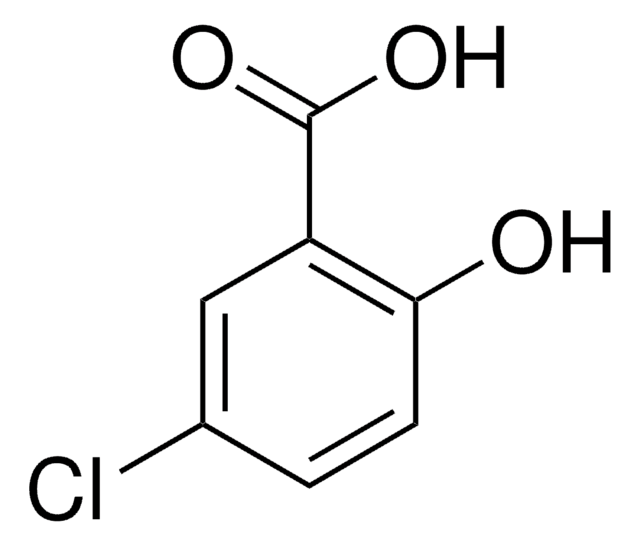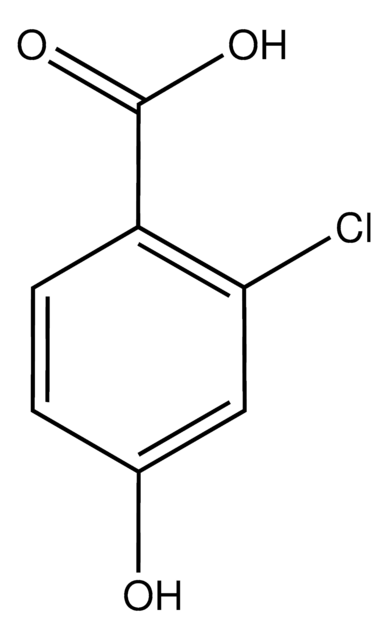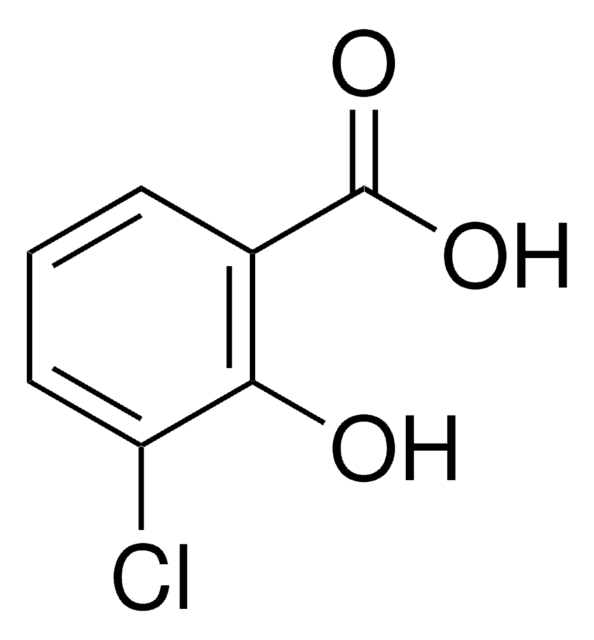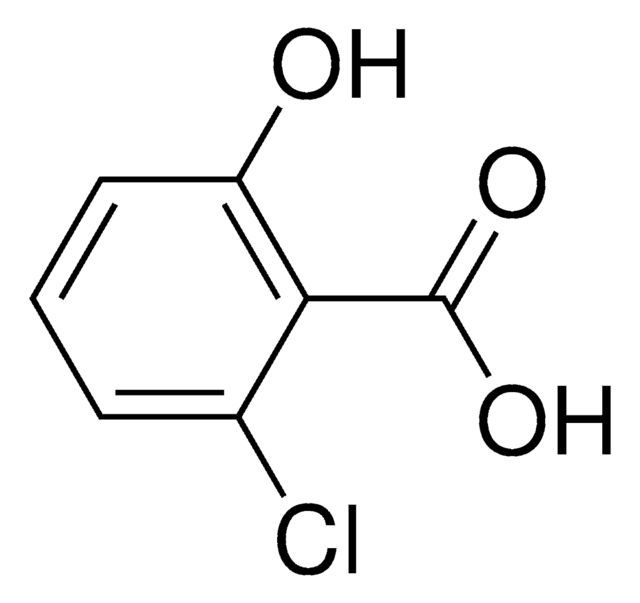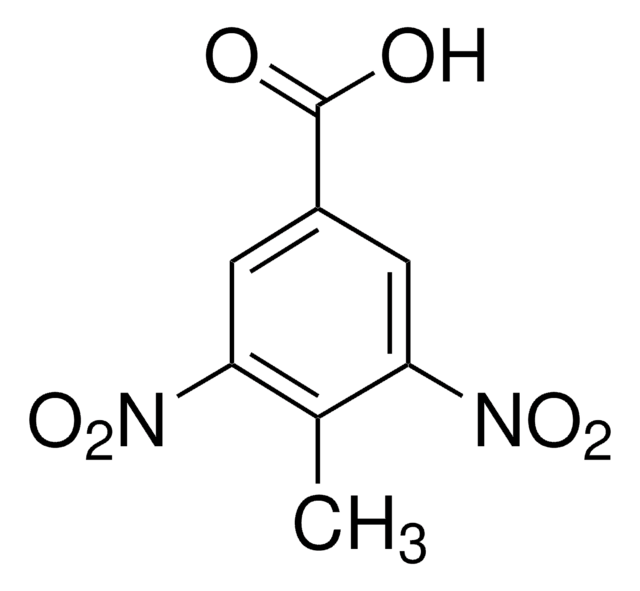All Photos(1)
About This Item
Linear Formula:
ClC6H3(OH)CO2H
CAS Number:
Molecular Weight:
172.57
EC Number:
MDL number:
UNSPSC Code:
12352100
PubChem Substance ID:
NACRES:
NA.22
Recommended Products
assay
93%
form
solid
mp
210-212 °C (lit.)
SMILES string
OC(=O)c1ccc(Cl)cc1O
InChI
1S/C7H5ClO3/c8-4-1-2-5(7(10)11)6(9)3-4/h1-3,9H,(H,10,11)
InChI key
LWXFCZXRFBUOOR-UHFFFAOYSA-N
Application
4-Chlorosalicylic acid was used in sensitive spectrofluorometric determination of terbium in mixed rare earths. It was used in preparation of poly(4-chlorosalicylic acid-formaldehyde) via condensation with formaldehyde.
Biochem/physiol Actions
4-Chlorosalicylic acid shows potent antibacterial activity against Escherichia coli.
signalword
Warning
hcodes
Hazard Classifications
Eye Irrit. 2 - Skin Irrit. 2 - STOT SE 3
target_organs
Respiratory system
Storage Class
11 - Combustible Solids
wgk_germany
WGK 3
flash_point_f
Not applicable
flash_point_c
Not applicable
ppe
dust mask type N95 (US), Eyeshields, Gloves
Certificates of Analysis (COA)
Search for Certificates of Analysis (COA) by entering the products Lot/Batch Number. Lot and Batch Numbers can be found on a product’s label following the words ‘Lot’ or ‘Batch’.
Already Own This Product?
Find documentation for the products that you have recently purchased in the Document Library.
Sonja Pawelczyk et al.
Journal of microbiological methods, 75(1), 117-126 (2008-07-03)
4-Chlorosalicylate (4-CS) can be degraded completely by a bacterial consortium consisting of Pseudomonas reinekei (MT1), Achromobacter spanius (MT3) and Pseudomonas veronii (MT4). The fourth species Wautersiella falsenii (MT2) is thought to act as a 'necrotizer' of the community. Single cell
4-Chlorosalicylic acid-formaldehyde polymer as a polymeric ligand.
Patel HS, et al.
Makromol. Chem., 106(1), 223-237 (1982)
Inhibitory effects of 4-chlorosalicylic acid on mushroom tyrosinase and its antimicrobial activities.
Han P, et al.
Food Chemistry, 107(2), 797-803 (2008)
Wei Jiang et al.
Analytical sciences : the international journal of the Japan Society for Analytical Chemistry, 19(6), 923-925 (2003-07-02)
The quadruple complex formed by terbium with 4-chlorosalicylic acid (CSA), EDTA and cetyltrimethylammonium bromide (CTMAB) has been used for the sensitive spectrofluorometric determination of terbium in mixed rare earths. The effect of the experimental conditions on the fluorescence intensity was
Patricia Nikodem et al.
Journal of bacteriology, 185(23), 6790-6800 (2003-11-18)
Pseudomonas sp. strain MT1 is capable of degrading 4- and 5-chlorosalicylates via 4-chlorocatechol, 3-chloromuconate, and maleylacetate by a novel pathway. 3-Chloromuconate is transformed by muconate cycloisomerase of MT1 into protoanemonin, a dominant reaction product, as previously shown for other muconate
Our team of scientists has experience in all areas of research including Life Science, Material Science, Chemical Synthesis, Chromatography, Analytical and many others.
Contact Technical Service